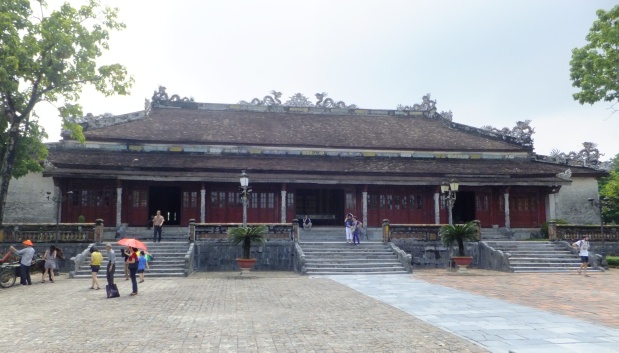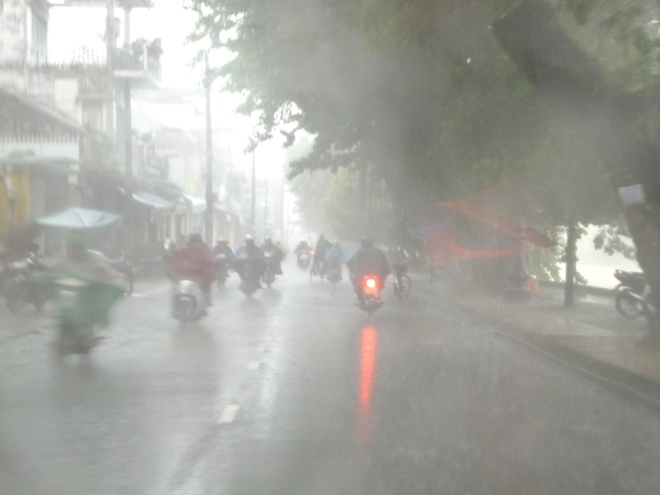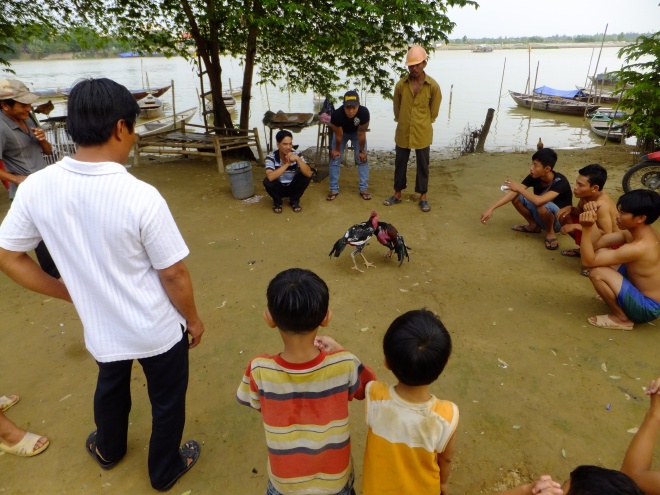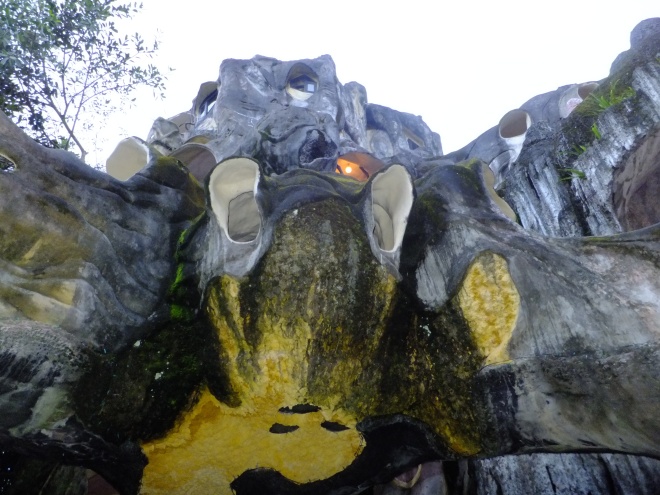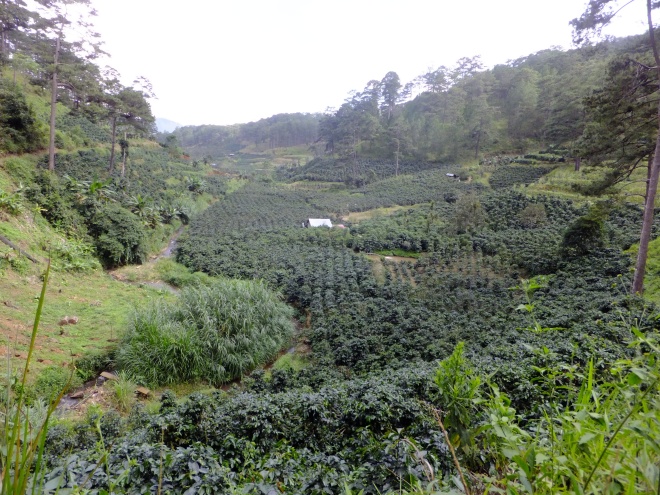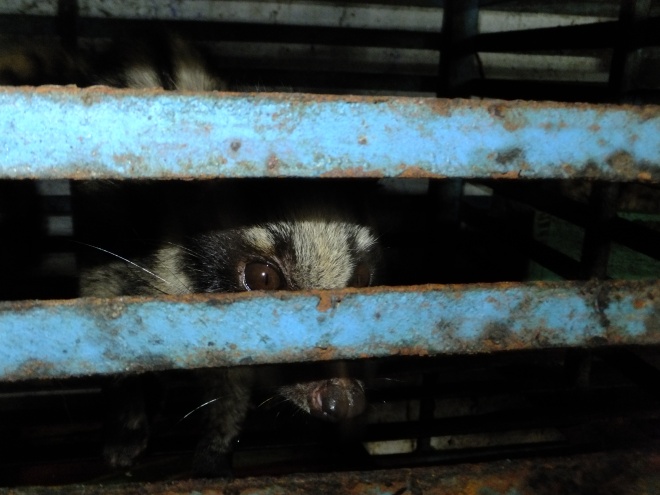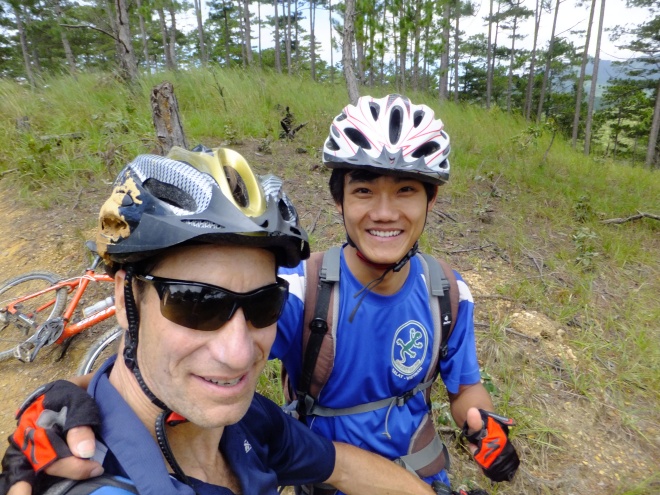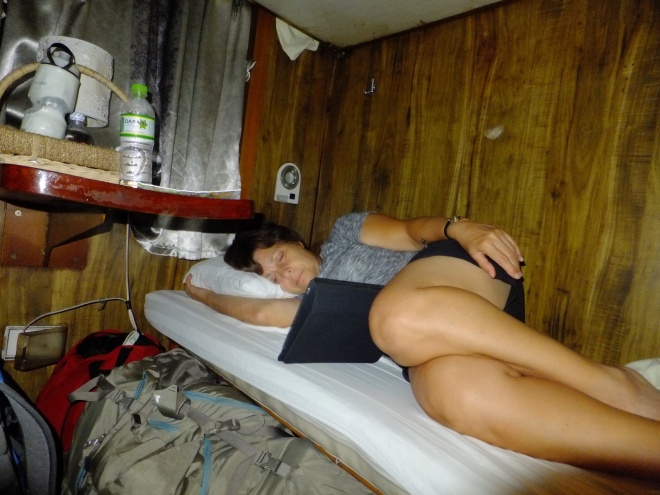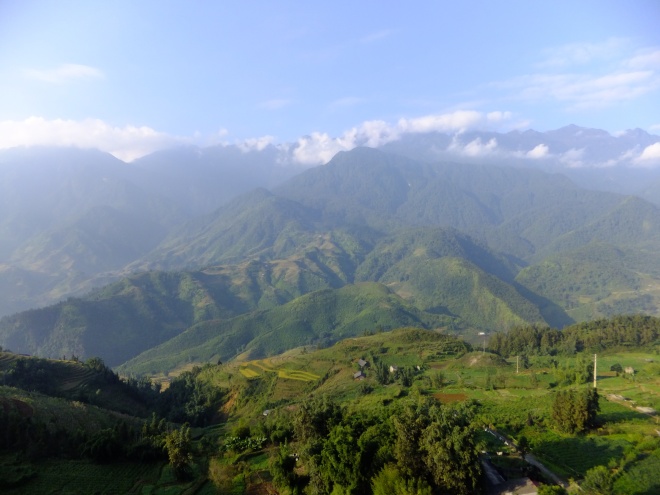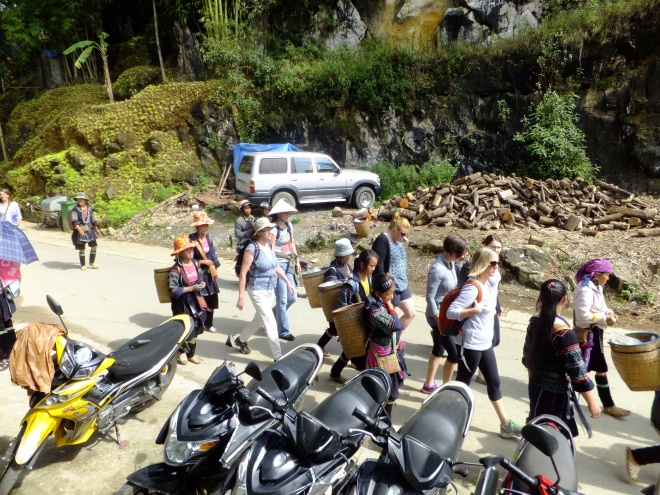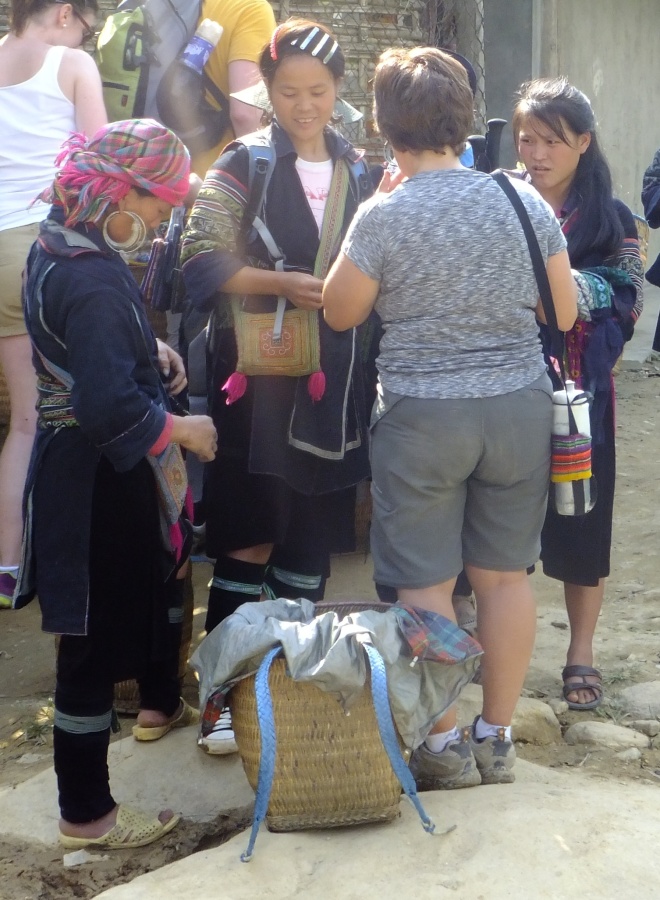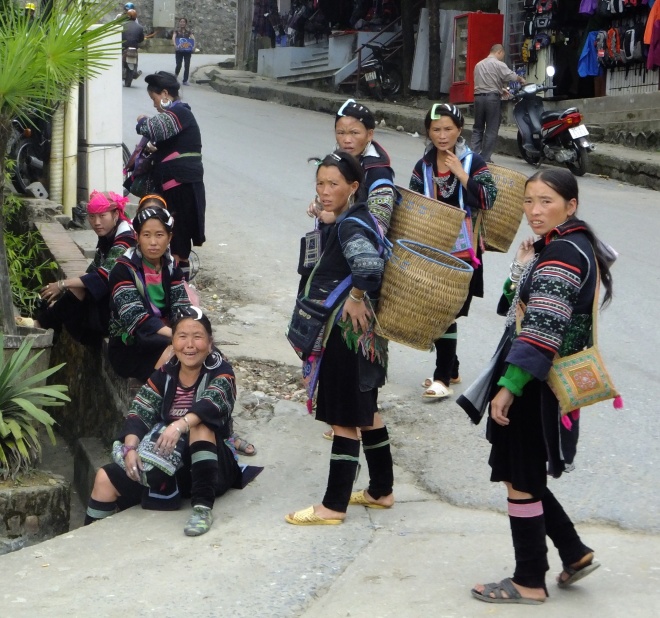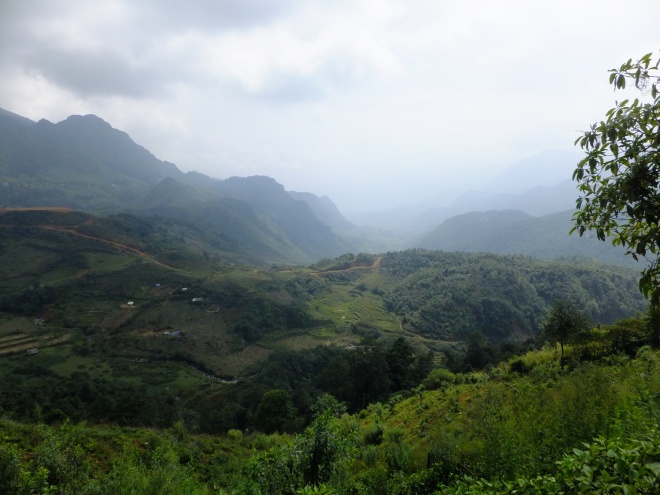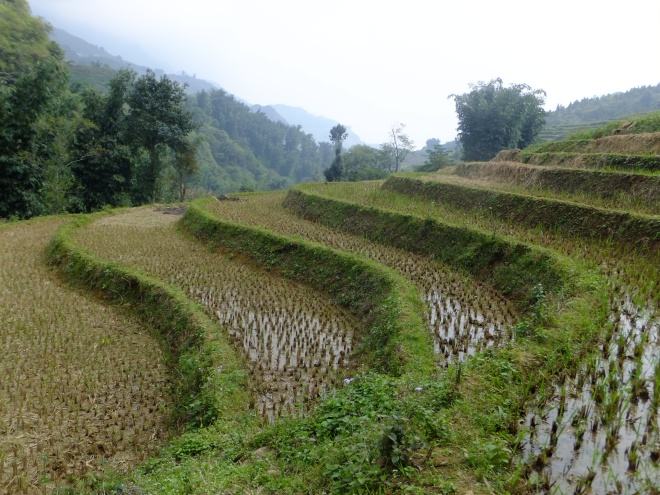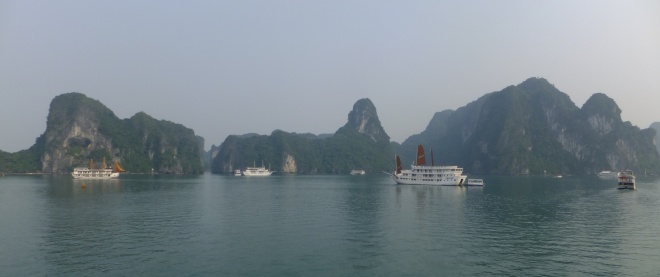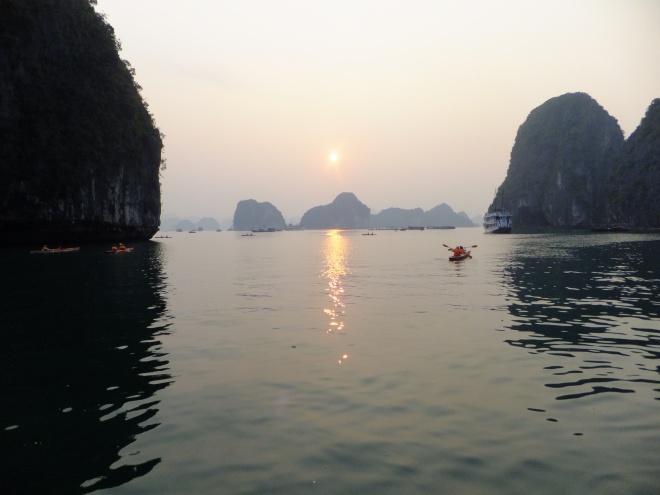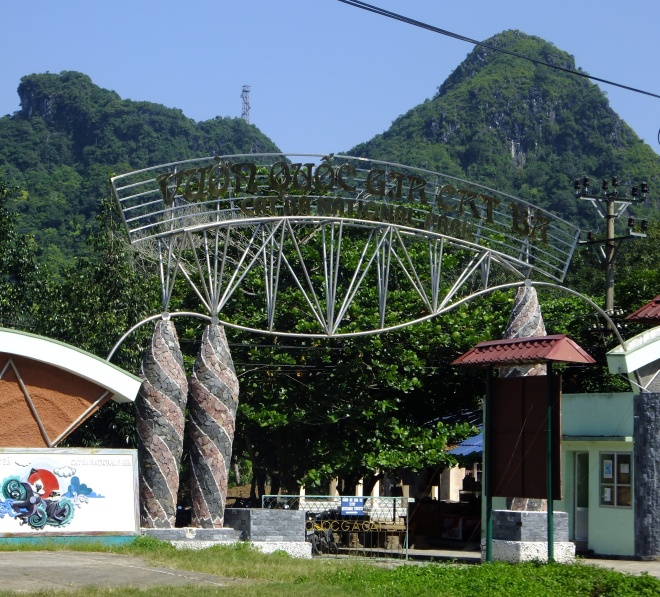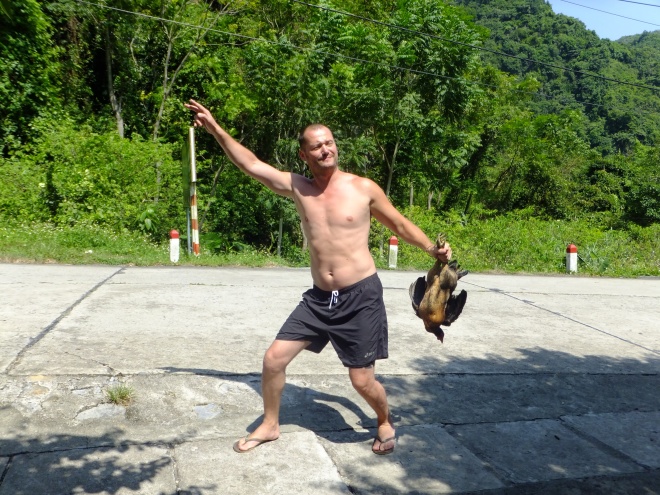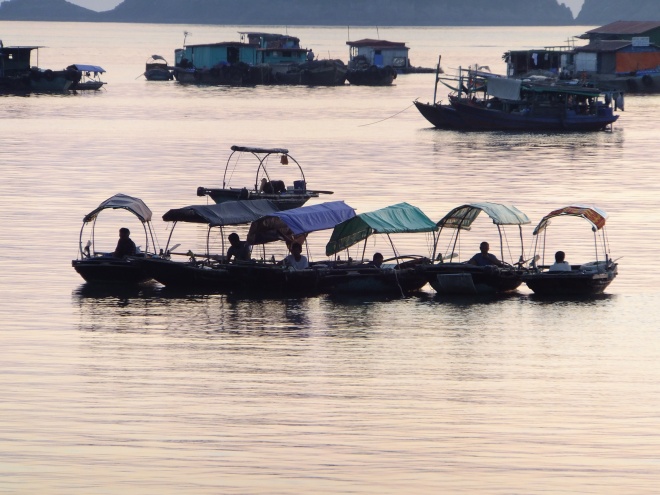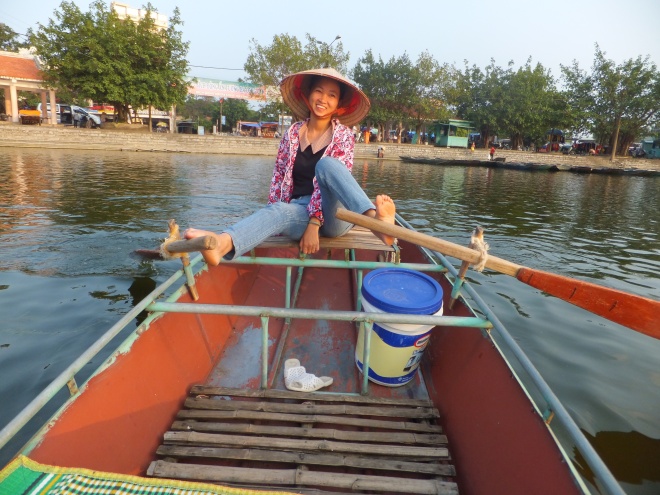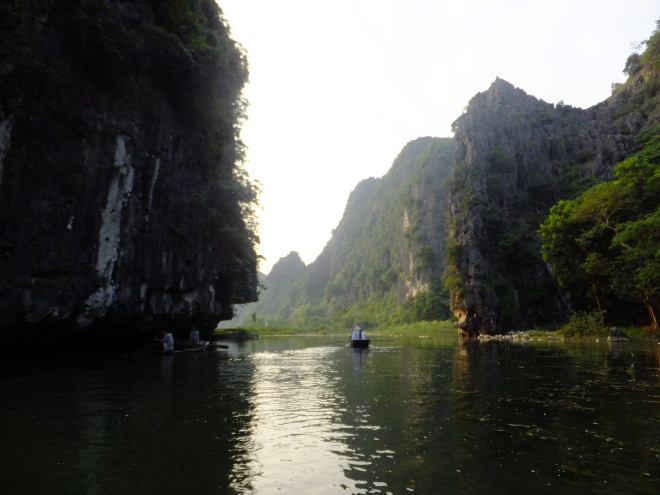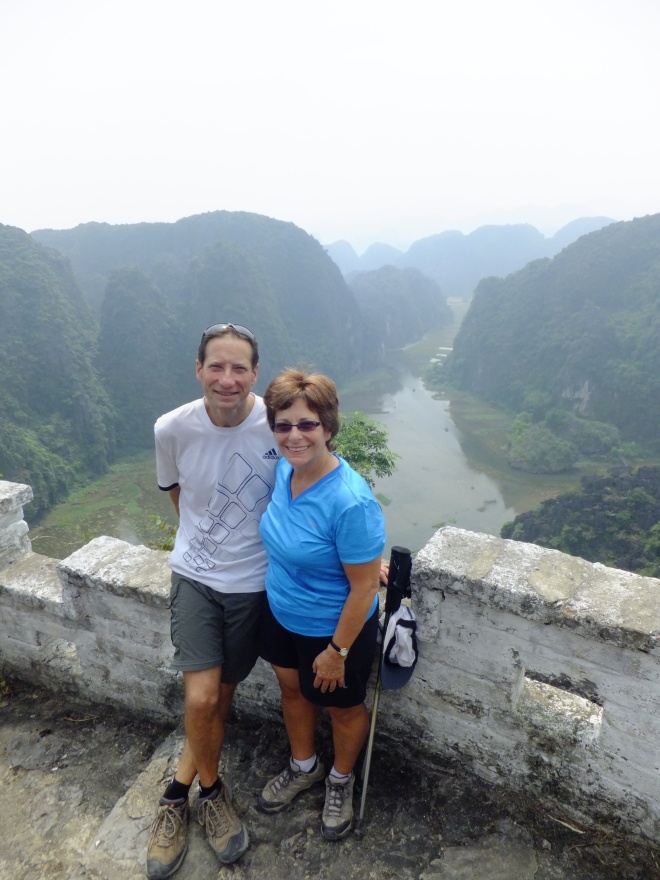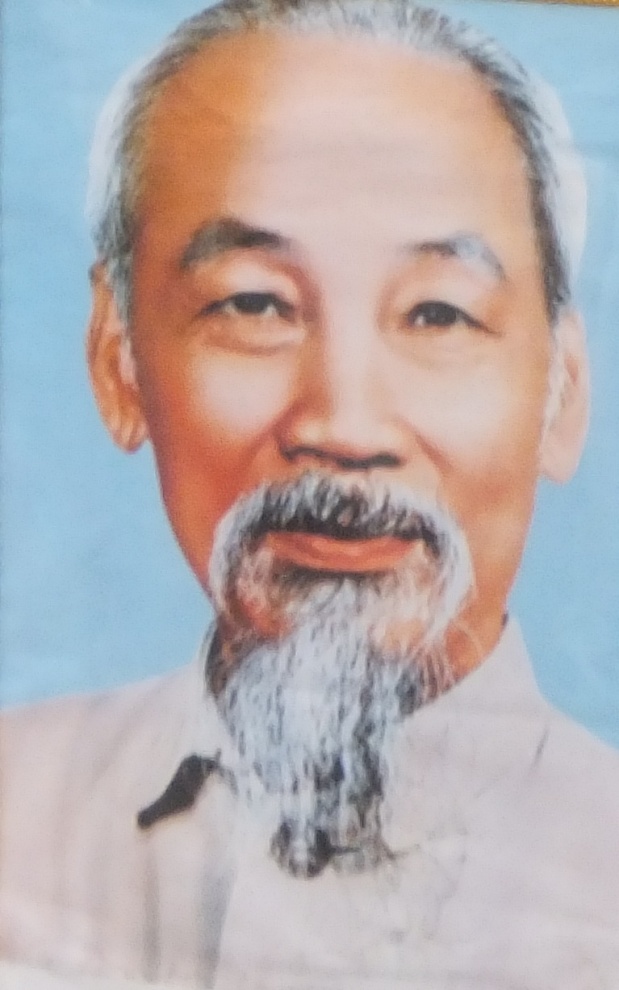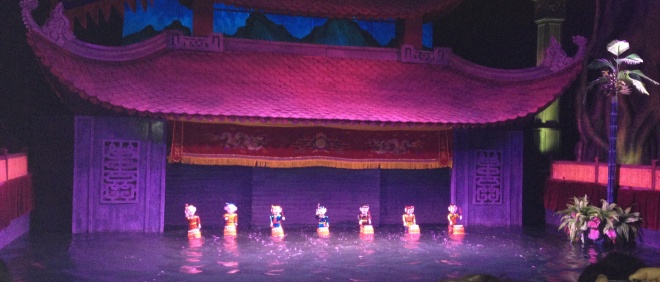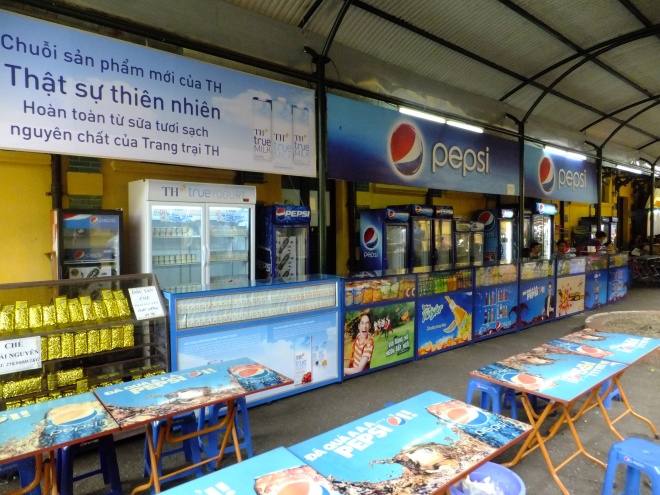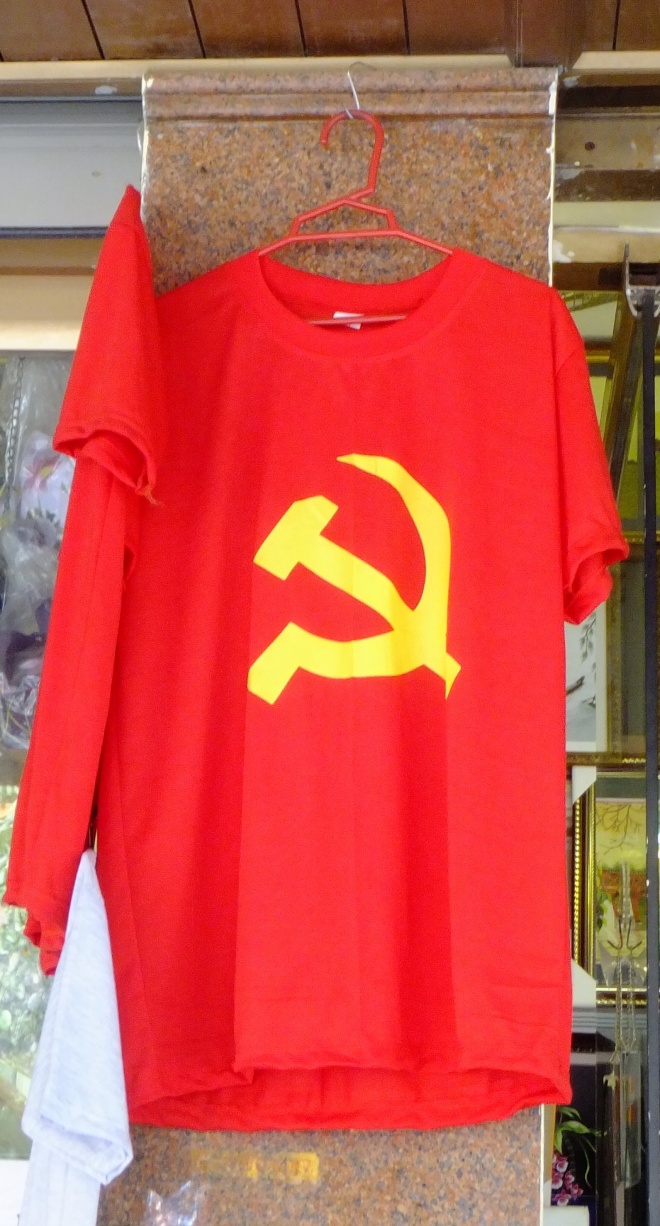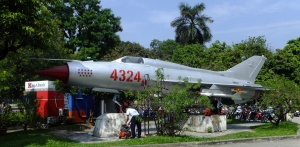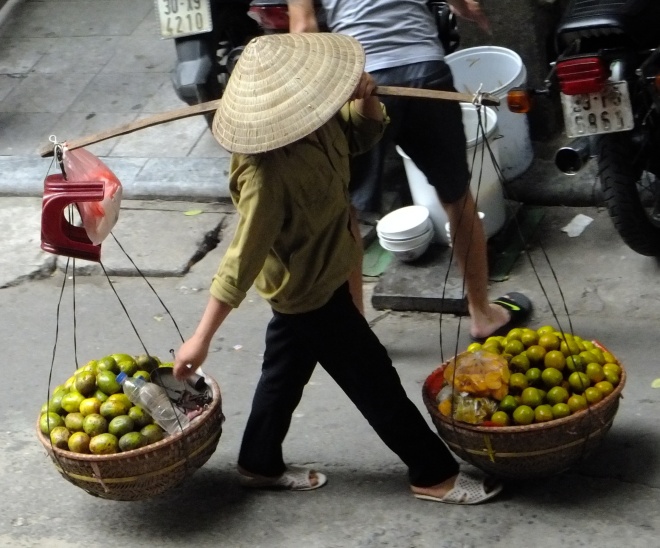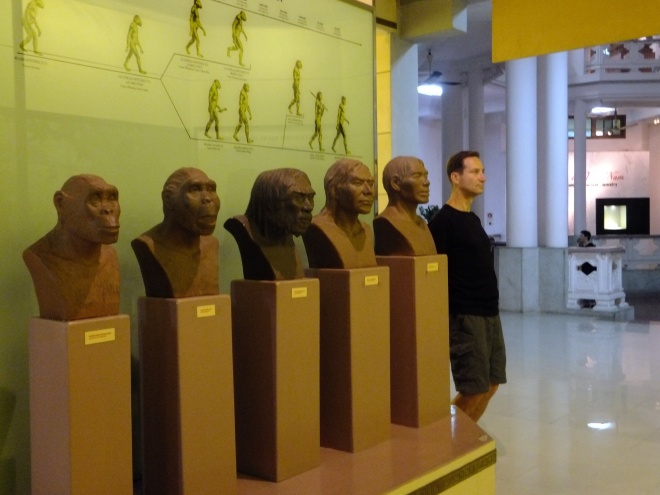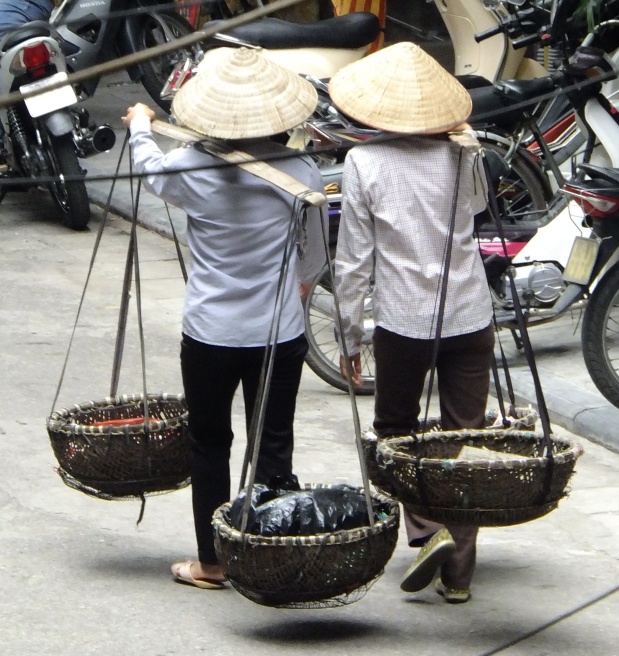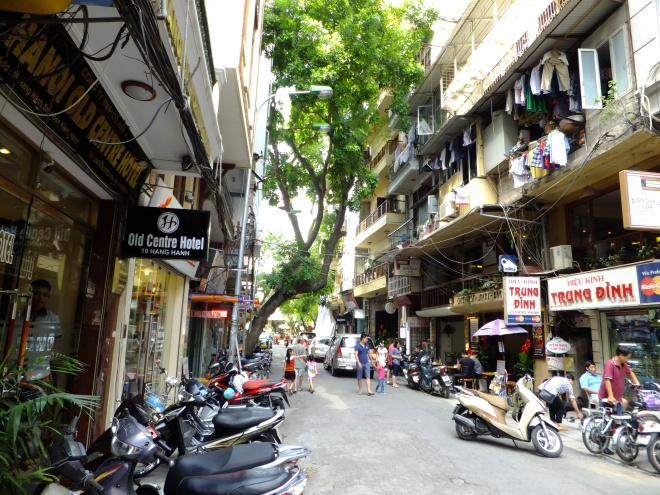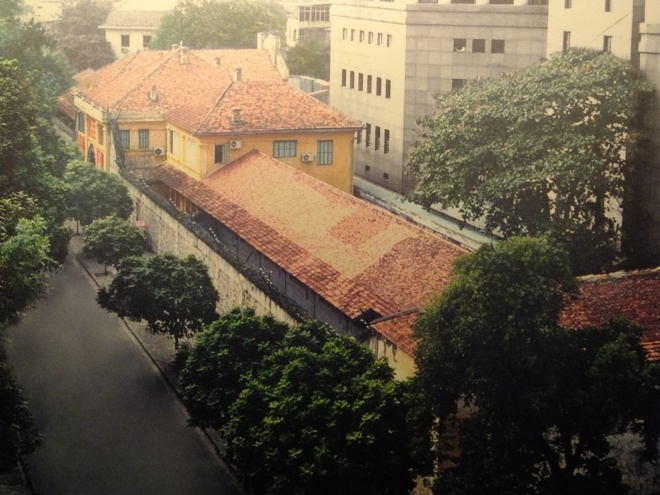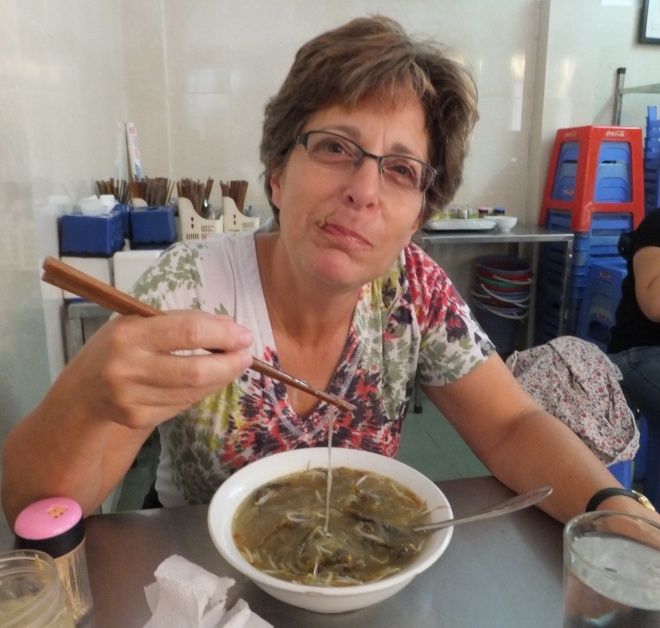Hue was the seat of the Nguyen empire which had a relatively short reign. It began at the start of the 19th century and ended with Emperor Bao Dai abdicating with the rise of the communist regime in the north just after WWII. We toured the former capital staying only a couple of days. Known also for its bad weather, we took a pedicab ride which quickly turned very wet with a torrential downpour. We were completely enclosed in out cabs except for a slit in the plastic between the top and the transparent plastic rain cover.
While in Hue (pron. “way”), we took a guided tour of the DMZ, Khe Sanh, the Ho Chi Minh trail and the tunnels at Vinh Moc village. When we shopped for this popular tour, we talked to our hotel, as well as some local tour agents, eventually opting for the “cheap” (their word) tour vs the VIP tour. (Travel agents insisted on using the word, “Veep” for VIP. I not totally sure, but through our travels I got the impression that “V.I.P.” is used to refer to communist officials.) You don’t always get what you pay for here, and this was one example. The VIP tour would have been $30 pp, but instead we opted for the cheap tour and paid about half. We had a private car/SUV and only had to share our guide with two others. It didn’t include lunch, but since that only cost $5.25 for two, I’d say we got a good deal.
Our tour guide was excellent. Not only was her english very good, but she was willing to field some questions which edged on religion and politics. It was exciting to visit historic places I had read and heard about so many times. At the same time, I felt fortunate to have come of age just after both the draft and war had ended.
The so-called Demilitarized Zone was one of the most militarized and embattled places in the world. I bristled at the anti-American propaganda in the building at Khe Sahn but recalled the U.S. military’s inflated body-counts and fear-mongering our own government used to keep us engaged in a conflict most Americans did not want to be in. After all, we were not at war; this was a “police action”.
The remaining tunnels at Vinh Moc were kept to their original size. They featured some of the same dorky life-sized mannequins we’d seen in other Vietnamese museums, though, they did give an idea of what life was like underground. There were many ‘rooms’ about 4′ X 5′ off the tunnels used by families of 4.
From Hue we continued our journey south to Hoi An. Only a few years ago it was a pretty sleepy town primarily known for its cloth and customized suit tailoring. There are many historic buildings and is a UNESCO world heritage site. At one time it was a major trading port. Now it’s a heavy tourist center with touts and hawkers aggressively selling their wares. We toured the local market and tried to get off the beaten track to see genuine local life.
A typhoon hit while we visited. Since Hue lies low along the coast, it’s very vulnerable to flooding and was devastated as recently as 2006. Residents were very concerned since they knew the dangers and the long-lasting impact it can have on their lives. Our hotel lost power for a short time but fortunately had a generator as a back up. We went for a walk after the majority of the storm had passed and saw lots of tree and some building damage. The most dramatic scene we saw was around the inlet where the water lapsed the street’s edge so far it encroached on to the next one parallel to it.
I was itching for some physical activity and Cindy wanted some rest, so she stayed in Hoi An while I went to the central highlands town of Dalat for some hiking and mountain biking. All over-night buses are not the same as I found out on the way. The last overnight bus we took had a tv, a toilet and was almost exclusively ridden by Vietnamese passengers. This one was filled with foreign backpacks and had no toilet, though, it did make several rest stops. At about 8:30pm we got a flat tire. I was impressed that a) they drove the bus with a flat for about 20 minutes, and b) they didn’t take much more than 10 minutes to swap the out the flat for a spare. While riding on the flat, I heard a couple of passengers voice dismay as we passed a gas filling station, the usual go-to spot for a western to fix a flat. We rode on for another 10-15 minutes before stopping at a house/garage to get it repaired.
In the morning I had arrived in Nha Trang and had to change buses for the trip to the mountains inland. I was told it would leave at 8am, but as is often the case, that was wrong information. I was pleasantly surprised when I only had to wait one hour and hopped on a newer and more comfortable bus that would take me to Dalat. Sure enough, we left the city and in short time started our ascent along the road that followed the contours of hills. As we rose in altitude the valley floor got more distant and the mountains got more steep. I was excited!
The highlands around Dalat proved an excellent antidote to physical malaise. For the first time on this journey, I arrived without reserving a room ahead of time, so my first order of business was to find a hotel. Since it’s the slow season it’s easy to score a decent room and did so with the help of my Lonely Planet guide. Once I did that, I toured “The Crazy House” which was the brain-child of the daughter of the second President of North Vietnam who studied architecture in Moscow before returning in 1975. A partially completed fantasy house, once I got over the heebie-jeebies of high-flying outdoor walkways with 2 foot-high rails, I thought it was quite creative. I’m certain the only thing that saved it from destruction by the communist party was the position of the creator’s father.
The first full day was spent on an 18 km trek through Tiger Waterfall park. The trek traverses park lands, as well as, privately owned farmlands primarily used for growing coffee; Vietnam is now the world’s second largest exporter of coffee. The locals like it strong and sludge-like. It was pretty much a private trek since it was myself and two guides, Loc and The, the later learning the route for future guiding expertise.
Vietnam also specialize in “Weasel Coffee”. Weasels are caught in the wild and/or bred to eat coffee. They fully digest the shells but expel the coffee beans which are then processed in the same manner as the three other types: Robusta, Mocha, and Arabica. Locals swear Weasel coffee tastes better than the other types. I can’t offer an opinion as it was too late in the day to try it and I didn’t get the chance for a single cup later in the trip.
The mountain bike ride was supposed to be about 37km but we had to alter the route due to flooding. It was so muddy that in one spot the mud went as deep as the hub on my wheel. The revised route clocked in at a total of 45km and featured more than a few pretty good climbs. Since I hadn’t been doing any thing close to the level before I left home, it was no picnic. Also, I decided to wear my sandals so I wouldn’t have to deal with the potential of drying wet shoes, but those proved a bit challenging as they were slippery on the pedals. My legs a bit sore when I got back but still felt like I wanted to do more. I am missing biking and it occurred to me on more than one occasion that Vietnam would be a great place to tour by bicycle.
I got back to Ho Chi Minh City to reconnect with Cindy and the next day we were joined by Aaron for a partial (we’re missing Ali!) family reunion as he had finished his trek to Mt. Everest base camp and would travel with us again for a days. HCMC is still called Saigon by many people and it was pretty much as we had anticipated. A vibrant, fast-moving metropolis dominated by the preferred Vietnamese method of travel, the motorscooter. I was told they outnumber cars by 10-1 but it seemed to me to be higher.
Some of the sights were from the ‘department of redundancy’ department, like a war museum, more war-time tunnels and a Ho Chi Minh museum, so we didn’t stay long, opting to explore the Mekong Delta south of the city.
As expected, the food has been amazingly good with some areas featuring regional specialties. The one or two meals we had that were sub-par made us feel like we’d been short-changed and looking forward to the next meal that much more.

